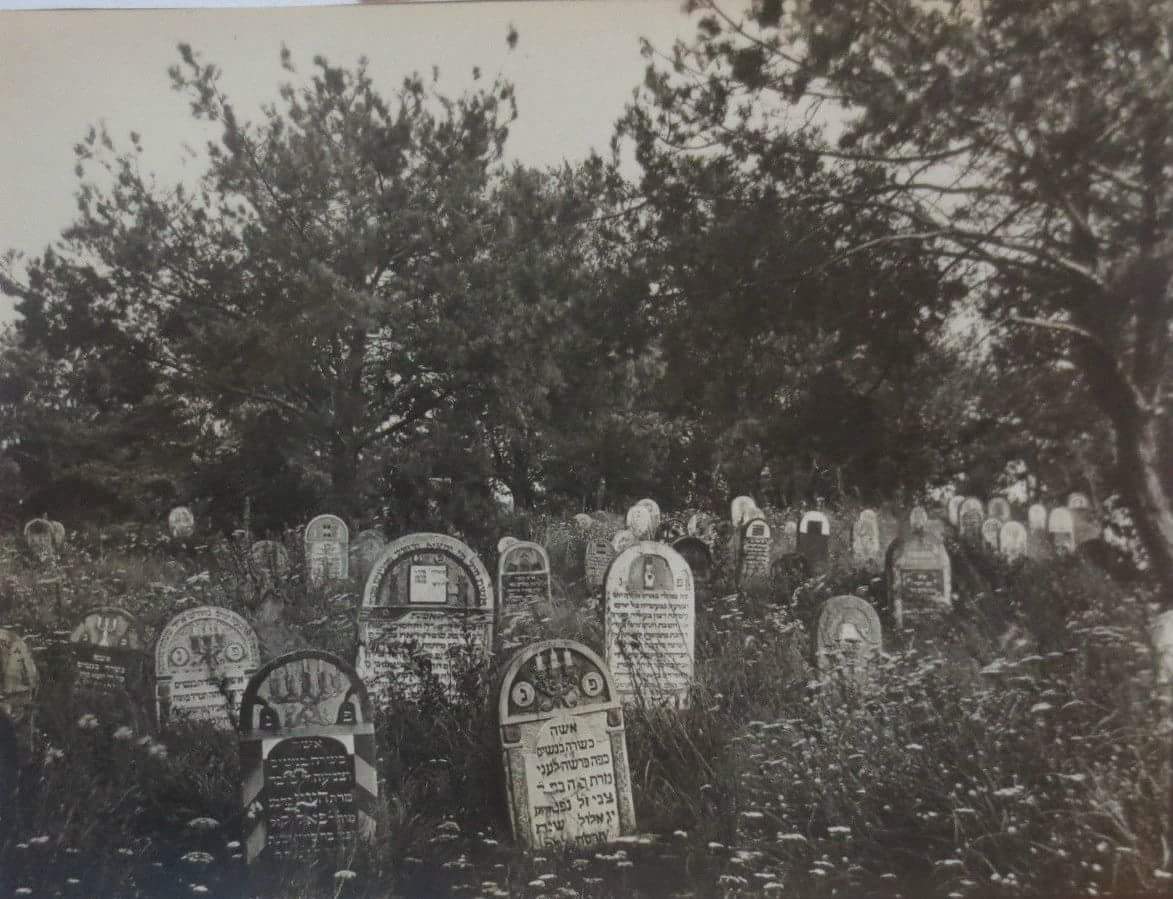 Alternate names: Włodawa [Pol], Vlodava [ולודאבה Yid, Влодава, Rus], Vladova, Vlodavi, Vlodeve, Vlodova, Wlodowa. 51°33' N, 23°33' E, on the Bug River (Poland-Belarus border), 38 miles S of Brest-Litovsk, 47 miles ENE of Lublin. Yizkors: Wlodawa; ner zikaron (Haifa, 1968) and Sefer zikaron Vlodavah veha-sevivah Sobibor (Tel Aviv, 1974). 1900 Jewish population: 3,670. A town in eastern Poland on the Bug river close to the borders with Belarus and Ukraine, the town had 14,800 inhabitants in 2001. Situated in Lublin Voivodeship since 1999, it is the capital of Włodawa County. [July 2009]
Alternate names: Włodawa [Pol], Vlodava [ולודאבה Yid, Влодава, Rus], Vladova, Vlodavi, Vlodeve, Vlodova, Wlodowa. 51°33' N, 23°33' E, on the Bug River (Poland-Belarus border), 38 miles S of Brest-Litovsk, 47 miles ENE of Lublin. Yizkors: Wlodawa; ner zikaron (Haifa, 1968) and Sefer zikaron Vlodavah veha-sevivah Sobibor (Tel Aviv, 1974). 1900 Jewish population: 3,670. A town in eastern Poland on the Bug river close to the borders with Belarus and Ukraine, the town had 14,800 inhabitants in 2001. Situated in Lublin Voivodeship since 1999, it is the capital of Włodawa County. [July 2009]
synagogue sketch. [August 2005]
WLODAWA I: US Commission No. AS 200
Alternate names: Vlodova and Vladova. The town is located in Chelm at 23º33E 51º34N, 47 km N of Chelm on the border with Byelorussia. Cemetery: 150 m west of market square near synagogue. Present town population is 5,000-25,000 with no Jews.
- Local: Urzad Gminy Wlodawa, ul. Wyzwolenia 30, Wlodawa.
- Regional: Wojewodzki Konserwator Zabytkow, ul. Lubelska 63. Tel. 650085 or 655972.
The earliest known Jewish community was 16th century. 1921 Jewish population was 4196 (67%). The unlandmarked Orthodox (Sephardic) cemetery was established in the 16th century with last known Jewish burial 17th century. The isolated urban flat land has no sign or marker. Reached by turning directly off a public road, access is open to all with no wall, fence, or gate. Approximate size of the cemetery before and after the war is about 0.1 hectare. No stones or known mass exist. The municipality presently owns the property used as the courtyard to the synagogue. The cemetery is never visited. The cemetery was vandalized during World War II with no maintenance or care. Security, pollution, vegetation (moderate threat), and incompatible nearby development are moderate threats.
Pawel Sygowski, Kalinowszczyzna 64/59, 20-201 Lublin, tel. 77-20-78, who visited the site in July 1995, completed survey in August 1995. Cartographic documentation was used.
WLODAWA II: AS 201
Cemetery: about 1 km N of town center. The unlandmarked cemetery was established in the beginning of the 19th century with last known Orthodox Jewish burial 1943. The isolated urban flat land has no sign or marker. Reached by turning directly off a public road, access is open to all with a continuous fence, but no gate. Approximate pre- and post-war size is about 3 hectares. Four sandstone stones are finely smoothed with Hebrew inscriptions removed from the cemetery are in a museum. The oldest stone is 1919. The cemetery has are special memorials to Polish soldiers and no known mass graves. The municipality presently owns the property used for a park. Adjacent properties are commercial/industrial and residential. Occasionally, organized Jewish group tours or pilgrimage tours and private visitors stop. The cemetery was vandalized during World War II. The local authorities repaired the wall around 1960. The cemetery is occasionally cleared/cleaned by the authorities. Pollution (slight threat), vegetation, vandalism, and incompatible nearby development are moderate threats.
Pawel Sygowski, Kalinowszczyzna 64/59, 20-201 Lublin, tel. 77-20-78, who visited the site in July 1995, completed survey in August 1995 using a documentation card. He conducted some interviews.
WLODAWA III: AS 202
Cemetery: about 1 km N of town center on ul. Wiejsha. The unlandmarked cemetery was established in the 18th century with last known Orthodox Jewish burial at the beginning of the 19th century. The isolated urban headland [sic] has no sign or marker. Reached by turning directly off a public road, access is open to all with no wall, fence, or gate. Approximate pre- and post-war size of the cemetery was about 0.5 hectare. No stones are visible. The cemetery contains no known mass graves. A regional or national government agency owns the property used for commercial/ industrial use and storage. Adjacent property is residential. Rarely, private visitors stop. The cemetery was vandalized during World War II with no maintenance or care. Weather erosion (moderate threat), pollution (slight threat), vegetation (moderate threat) [SIC-elsewhere stated it was no problem]; incompatible nearby development (moderate threat).
Pawel Sygowski, Kalinowszczyzna 64/59, 20-201 Lublin, tel. 77-20-78, who visited the site in July 1995, completed survey in August 1995. He conducted some interviews.
(Yiddish: Vlodavi) "The Jewish cemetery on the Soviet border is submerged under the municipal garbage dump." [Source? Date?]
BOOK: Gruber, Ruth Ellen. Jewish Heritage Travel A Guide to East-Central Europe . New York: John Wiley & Sons, Inc., 1992. p. 70
[UPDATE] Photo from Facebook [March 2015]

